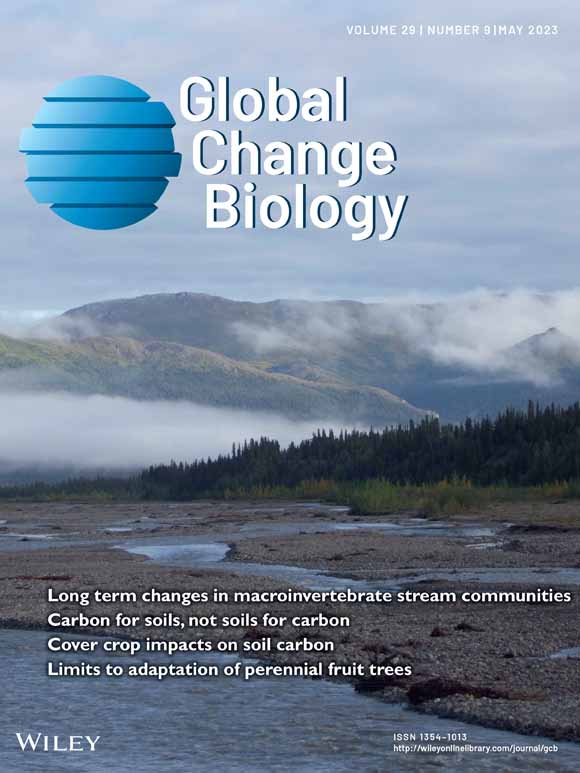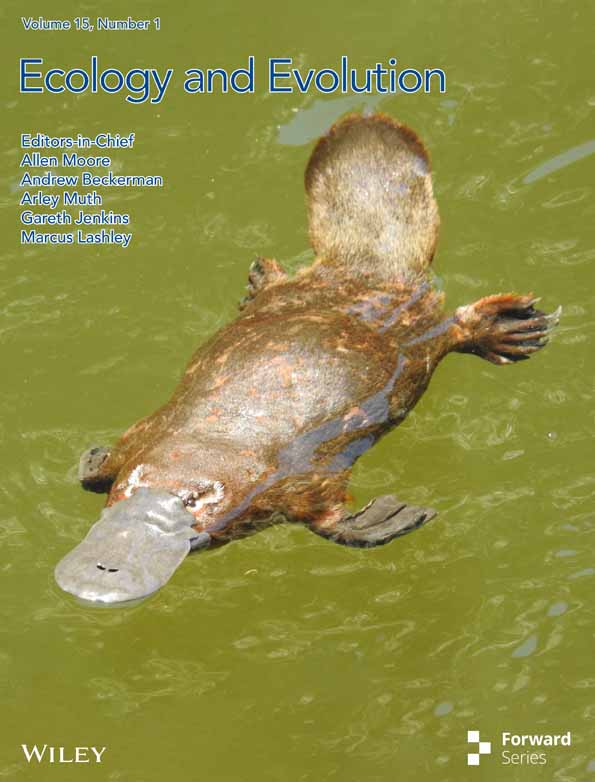Please find all scientific publications of IGB under > scientific publications
For more detailed information please refer to our > library catalogue
41 - 50 of 672 items
April 2025
Frontiers in Environmental Science. - 13(2025), Art. 1589648
Nutrient availability modulates the effects of plastic leachates on the growth and community dynamics of free-living freshwater bacteria
Marius Schubert; Fazel Abdolahpur Monikh; Yuyi Yang; Hans-Peter Grossart
April 2025
WIREs Water. - 12(2025)2, Art. e70018
The Unexploited Treasures of Hydrological Observations Beyond Streamflow for Catchment Modeling
Paul D. Wagner; Doris Duethmann; Jens Kiesel; Sandra Pool; Markus Hrachowitz; Serena Ceola; Anna Herzog; Tobias Houska; Ralf Loritz; Diana Spieler; Maria Staudinger; Larisa Tarasova; Stephan Thober; Nicola Fohrer; Doerthe Tetzlaff; Thorsten Wagener; Björn Guse
Other hydrological data than streamflow have the potential to improve process consistency in hydrological modeling and consequently for predictions under change. The authors review how storage and flux variables are used for model evaluation and calibration; improving process representation.
April 2025
Conservation Biology. - XX(2025)X, Art. e70023
A social network analysis of the European science–policy–society interface on biodiversity
Dalia D'Amato; Salla Rantala; Kaisa Korhonen-Kurki; Karla E. Locher-Krause; Twan Stoffers; Enzo Falco; Renata Włodarczyk-Marciniak; Mihai Adamescu; Kinga Krauze; M. Susana Orta-Ortiz; Robin Dianoux; Matthew J. Grainger; Juliette Young
April 2025
Communications Earth & Environment. - 6(2025), Art. 299
Mangroves support an estimated annual abundance of over 700 billion juvenile fish and invertebrates
Philine S. E. zu Ermgassen; Thomas A. Worthington; Jonathan R. Gair; Emma E. Garnett; Nibedita Mukherjee; Kate Longley-Wood; Ivan Nagelkerken; Kátya Abrantes; Octavio Aburto-Oropeza; Alejandro Acosta; Ana Rosa da Rocha Araujo; Ronald Baker; Adam Barnett; Christine M. Beitl; Rayna Benzeev; Justin Brookes; Gustavo A. Castellanos-Galindo; Ving Ching Chong; Rod M. Connolly; Marília Cunha-Lignon; Farid Dahdouh-Guebas; Karen Diele; Patrick G. Dwyer; Daniel A. Friess; Thomas Grove; M. Enamul Hoq; Chantal Huijbers; Neil Hutchinson; Andrew F. Johnson; Ross Johnson; Jon Knight; Uwe Krumme; Baraka Kuguru; Shing Yip Lee; Aaron Savio Lobo; Blandina R. Lugendo; Jan-Olaf Meynecke; Cosmas Nzaka Munga; Andrew D. Olds; Cara L. Parrett; Borja G. Reguero; Patrik Rönnbäck; Anna Safryghin; Marcus Sheaves; Matthew D. Taylor; Jocemar Tomasino Mendonça; Nathan J. Waltham; Matthias Wolff; Mark D. Spalding
April 2025
Limnology and Oceanography. - XX(2025)XX, XX-XX
Trophic strategies of freshwater nanoflagellates under variable run-off scenarios
Katerina Symiakaki; Stella A. Berger; Gabriela Agreda-Lopez; Bence Buttyan; Bence Gergacz; Silke Langenheder; Jens C. Nejstgaard
April 2025
Frontiers in Environmental Science. - 13(2025), Art. 1559941
Per- and polyfluoroalkyl substances (PFAS) in the cryosphere – occurrence, organismic accumulation, ecotoxicological impacts, transformation, and management strategies
Ashani Arulananthan; Oddur Þór Vilhelmsson; Ulf Karsten; Hans-Peter Grossart; Auður Sigurbjörnsdóttir; Óttar Rolfsson; Hanna Joerss; Bettina Scholz

April 2025
Global Change Biology. - 31(2025)4, Art. e70171
Positive Feedback on Climate Warming by Stream Microbial Decomposers Indicated by a Global Space-For-Time Substitution Study
Javier Pérez; Luz Boyero; Richard G. Pearson; Mark O. Gessner; Alan Tonin; Naiara López-Rojo; Juan Rubio-Ríos; Francisco Correa-Araneda; Alberto Alonso; Aydeé Cornejo; Ricardo J. Albariño; Sankarappan Anbalagan; Leon A. Barmuta; Andrew J. Boulton; Francis J. Burdon; Adriano Caliman; Marcos Callisto; Ian C. Campbell; Bradley J. Cardinale; Luciana S. Carneiro; J. Jesús Casas; Ana M. Chará-Serna; Eric Chauvet; Checo Colón-Gaud; Aaron M. Davis; Elvira de Eyto; Monika Degebrodt; María E. Díaz; Michael M. Douglas; Andrea C. Encalada; Ricardo Figueroa; Alexander S. Flecker; Tadeusz Fleituch; André Frainer; Erica A. García; Gabriela García; Pavel E. García; Paul S. Giller; Jesús E. Gómez; Jose F. Gonçalves Jr.; Manuel A. S. Graça; Robert O. Hall Jr.; Neusa Hamada; Luiz U. Hepp; Cang Hui; Daichi Imazawa; Tomoya Iwata; Edson S. A. Junior; Andrea Landeira-Dabarca; María Leal; Kaisa Lehosmaa; Charles M. M'Erimba; Richard Marchant; Renato T. Martins; Frank O. Masese; Megan Maul; Brendan G. McKie; Adriana O. Medeiros; Jen A. Middleton; Timo Muotka; Junjiro N. Negishi; Alonso Ramírez; Renan S. Rezende; John S. Richardson; José Rincón; Claudia Serrano; Angela R. Shaffer; Fran Sheldon; Christopher M. Swan; Nathalie S. D. Tenkiano; Scott D. Tiegs; Janine R. Tolod; Michael Vernasky; Elizabeth W. Wanderi; Anne Watson; Catherine M. Yule

April 2025
Methodik der naturschutzfachlichen Invasivitätsbewertung für gebietsfremde Arten (NIB) – Version 2.0
Stefan Nehring; Wolfgang Rabitsch; Tina Heger; Jonathan Jeschke; Wolf-Christian Saul
April 2025
Biogeochemistry. - 168(2025), Art. 40
Biogenic polyphosphate as relevant regulator of seasonal phosphate storage in surface sediments of stratified eutrophic lakes
Lucas Schröder; Peter Schmieder; Michael Hupfer
Using nuclear magnetic resonance spectroscopy, the authors studied the polyphosphate seasonality in the topmost sediment layer of three stratified lakes with prolonged anoxic periods during summer stratification. Polyphosphate acted as a temporary phosphorus storage, formed at the beginning of the summer stratification under oxic conditions and released time delayed under anoxic conditions.

April 2025
Ecology and Evolution. - 15(2025)4, Art. e71171
Insight Into Trophic Niche Differentiation in Labeobarbus (Cyprinidae) in the Luhoho Basin (Upper Congo Basin)
Tchalondawa Kisekelwa; Wilondja Alimasi; Mudagi Joyeuse; Musombwa Kubota; Heri Muzungu; Archimède Mushagalusa Mulega; Pieter Lemmens; Emmanuel Vreven; Jos Snoeks; Mulungula Masilya; Steven Bouillon; Benjamin Lejeune






